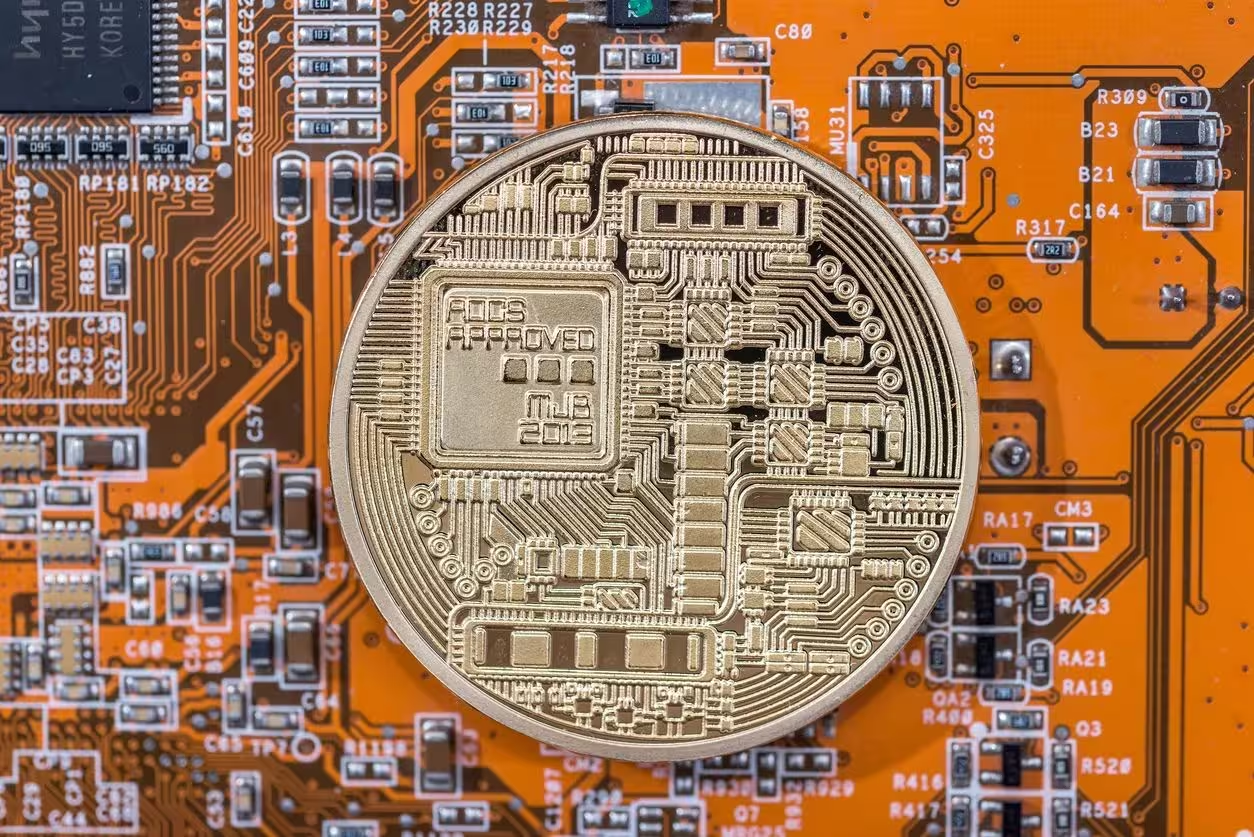Cryptocurrencies are changing the way we think about money and finance. As digital currencies become more popular, they offer new ways to make payments, save money, and invest. This article explores how cryptocurrencies are evolving and why they are important for the future of finance and why you should stand with crypto.
Key Takeaways
- Cryptocurrencies offer faster and cheaper transactions than traditional banks.
- They help people without bank accounts access financial services.
- Blockchain technology ensures secure and transparent transactions.
- Businesses are increasingly accepting cryptocurrencies for payments.
- Regulations are evolving to better fit the growing crypto market.
The Evolution of Cryptocurrencies in Modern Finance
Historical Background of Cryptocurrencies
Cryptocurrencies began with Bitcoin, created in 2009 by an unknown person or group using the name Satoshi Nakamoto. The first recorded transaction involved sending 10 bitcoins to Hal Finney, marking a significant moment in digital currency history. Since then, many other cryptocurrencies have emerged, each with unique features and purposes.
Key Milestones in Cryptocurrency Development
- 2009: Launch of Bitcoin, the first cryptocurrency.
- 2015: Introduction of Ethereum, enabling smart contracts.
- 2017: The ICO boom, where many new cryptocurrencies were launched.
- 2020: Rise of DeFi (Decentralized Finance) platforms, changing how financial services are offered.
Impact on Traditional Financial Systems
Cryptocurrencies have challenged traditional finance by offering:
- Faster transactions: Unlike traditional banking, which can take days, crypto transactions can be completed in seconds.
- Lower fees: Transaction costs are often significantly reduced, making it cheaper for users.
- Accessibility: Cryptocurrencies can reach unbanked populations, providing financial services to those without access to traditional banks.
The rise of cryptocurrencies signifies a shift in how we view and use money, paving the way for a more inclusive financial future.
How Cryptocurrencies Are Revolutionizing Payments
Cryptocurrencies are changing the way we think about money and payments. They offer faster and cheaper ways to send money across borders. This is especially important for people who need to send money to family or friends in other countries. Traditional methods can take days, but with cryptocurrencies, transactions can happen in seconds.
Speed and Efficiency of Crypto Transactions
One of the biggest advantages of cryptocurrencies is their speed. Here’s a quick comparison:
| Method | Time Taken |
|---|---|
| Traditional Transfer | Up to 5 days |
| Cryptocurrency Transfer | Seconds to minutes |
This means that businesses can get paid faster, and individuals can send money without long waits.
Lower Transaction Costs
Using cryptocurrencies can save a lot of money on fees. For example, sending money through traditional banks can cost a lot in fees. In contrast, many cryptocurrencies charge very low fees, often less than a dollar. This is a huge benefit for businesses and individuals alike.
- Traditional Bank Fees: Can be 2-3% of the transaction amount.
- Crypto Fees: Often less than $0.10.
Borderless Payments
Cryptocurrencies allow for borderless payments, meaning you can send money anywhere in the world without worrying about exchange rates or high fees. This is especially helpful for people who are unbanked or don’t have access to traditional banking services.
Cryptocurrencies are paving the way for a more inclusive financial system, making it easier for everyone to participate in the global economy.
In summary, cryptocurrencies are not just a trend; they are a powerful tool that is reshaping how we make payments. With their speed, low costs, and ability to cross borders easily, they are set to become a major part of our financial future.
The Role of Blockchain Technology in Crypto

Understanding Blockchain Basics
At the core of cryptocurrencies is blockchain technology, which acts as a secure and transparent ledger. A blockchain is a distributed database shared across a network of computers. This means that every transaction is recorded in blocks that are linked together, forming a chain.
Security and Transparency
The decentralized nature of blockchain ensures that no single entity controls the data, making it very hard to alter or hack. Each transaction is verified by a consensus protocol, which means that all copies of the database are the same. This creates a high level of security and trust.
Decentralization and Its Benefits
Decentralization offers several advantages:
- Increased security: No central point of failure.
- Transparency: All transactions are visible to everyone on the network.
- Lower costs: Fewer intermediaries mean lower fees.
Blockchain technology is not just about cryptocurrencies; it’s about creating a new way to manage and share data securely.
In summary, blockchain technology is the backbone of cryptocurrencies, providing a secure, transparent, and efficient way to conduct transactions. Its decentralized nature is what makes it revolutionary in the world of finance.
Financial Inclusion Through Cryptocurrencies
Reaching the Unbanked Population
Cryptocurrencies can help reach people without bank accounts. Unlike traditional banking systems, where intermediaries manage funds, crypto enables users to store, send, and receive money without needing a bank account. This opens up financial services to many who have been excluded from the traditional banking system.
Lowering Barriers to Entry
Setting up a cryptocurrency wallet is much easier than opening a bank account. Here are some key points about this:
- No lengthy application processes
- Quick setup after basic verification
- Accessible to anyone with internet access
Promoting Economic Inclusivity
Cryptocurrencies can support economic growth by providing financial services to those who need them most. They can help:
- Facilitate small business growth
- Enable easier remittances for families
- Encourage savings and investments
The presence of cryptocurrencies can deter financial crimes such as bank fraud and money laundering. This is essential for maintaining compliance with regulatory standards and building consumer trust in the crypto market.
By embracing cryptocurrencies, we can create a more inclusive financial system that benefits everyone, especially those who have been left out.
Cryptocurrencies and Decentralized Finance (DeFi)

Decentralized Finance, or DeFi, is changing how we think about money and banking. It allows people to access financial services like borrowing and lending without needing traditional banks. This is done through smart contracts, which are self-executing contracts with the terms directly written into code.
Introduction to DeFi
DeFi is like a new version of finance that runs on the blockchain. It aims to make financial services available to everyone, especially those who don’t have access to banks. Here are some key points about DeFi:
- No intermediaries: Transactions happen directly between users.
- Transparency: All transactions are visible on the blockchain.
- Accessibility: Anyone with an internet connection can use DeFi services.
Crypto Lending and Borrowing
In DeFi, users can lend their cryptocurrencies to others and earn interest. Here’s how it works:
- A user deposits their crypto into a lending platform.
- Other users can borrow that crypto, usually by providing collateral.
- The lender earns interest on the loan.
Smart Contracts and Their Applications
Smart contracts are crucial in DeFi. They automatically execute transactions when certain conditions are met. This means:
- Faster transactions: No waiting for bank approvals.
- Lower costs: Fewer fees compared to traditional finance.
- Security: Transactions are secure and tamper-proof.
DeFi is not just about replacing banks; it’s about creating a more open and inclusive financial system.
In summary, DeFi is reshaping finance by using cryptocurrencies and blockchain technology to provide services that are faster, cheaper, and more accessible than traditional banking. As this space grows, it promises to bring financial services to millions who have been left out of the traditional system.
Regulatory Challenges and Opportunities in Crypto
Current Regulatory Landscape
The rapid growth of the crypto industry has led to a mix of responses from governments worldwide. Some countries have embraced cryptocurrencies, while others have imposed strict bans. This creates a complex environment where regulations can vary significantly. For instance:
- Switzerland and Malta have adopted friendly laws to support innovation.
- China has implemented severe restrictions on crypto activities.
- In the U.S., different agencies like the SEC and CFTC interpret regulations differently, adding to the confusion.
Balancing Decentralization and Compliance
Regulators face the challenge of creating rules that protect investors without stifling innovation. Here are some potential approaches:
- Identity verification in DeFi protocols while maintaining user privacy.
- Community governance where token holders make decisions collectively.
Both methods have their pros and cons, and finding the right balance is crucial for the future of crypto.
Future Regulatory Trends
Looking ahead, we can expect:
- Clearer definitions of DeFi operations.
- Stricter Know Your Customer (KYC) and Anti-Money Laundering (AML) requirements.
- Enhanced rules for investor protection.
The European Commission’s Markets in Crypto-Assets (MiCA) framework, adopted in June 2023, is a significant step in this direction, impacting DeFi operations in Europe.
Understanding the regulatory landscape is essential for anyone involved in crypto. It can shape the future of finance and innovation.
Conclusion
As the crypto world continues to evolve, staying informed about regulatory changes is vital. The balance between innovation and protection will determine how cryptocurrencies integrate into the broader financial system.
The Growing Adoption of Cryptocurrencies by Businesses
E-commerce and Crypto Payments
Cryptocurrencies are becoming a popular choice for businesses, especially in e-commerce. Many companies are now accepting crypto payments, which makes transactions faster and cheaper. This shift is not just a trend; it shows that digital currencies are becoming a normal part of our financial system. For example, major companies like Tesla and Microsoft have started to accept cryptocurrencies, highlighting their growing influence.
Corporate Investment in Cryptocurrencies
Businesses are also investing in cryptocurrencies. This investment is seen as a way to diversify assets and tap into the potential of digital currencies. According to the 2024 global crypto adoption index, the total value of global crypto activity has increased significantly, showing that more businesses are recognizing the benefits of cryptocurrencies.
Case Studies of Successful Adoption
Here are a few examples of companies that have successfully adopted cryptocurrencies:
- Tesla: Accepts Bitcoin for car purchases.
- PayPal: Allows users to buy, hold, and sell cryptocurrencies.
- Starbucks: Accepts crypto payments through a partnership with a digital wallet.
These examples show that cryptocurrencies are not just a passing fad; they are becoming a vital part of how businesses operate today.
As we look to the future, it’s clear that cryptocurrencies are set to play a major role in the global economy, making transactions easier and more efficient for everyone.
Cryptocurrencies as a Tool for Capital Raising
Initial Coin Offerings (ICOs)
Initial Coin Offerings (ICOs) have become a popular way for new cryptocurrency projects to raise funds. In an ICO, a project sells its tokens to investors in exchange for established cryptocurrencies like Bitcoin or Ethereum. This method allows startups to gather capital quickly and efficiently.
Security Token Offerings (STOs)
Security Token Offerings (STOs) are another way to raise funds, but they are more regulated than ICOs. STOs represent ownership in an asset, like shares in a company. This makes them appealing to investors looking for a safer option.
Crowdfunding Through Cryptocurrencies
Crowdfunding using cryptocurrencies allows projects to reach a global audience. By using platforms that accept crypto, projects can attract investors from anywhere in the world. This method not only increases funding opportunities but also promotes community engagement.
Benefits of Using Cryptocurrencies for Capital Raising
- Faster Transactions: Crypto transactions can be completed in hours, unlike traditional methods that may take days.
- Lower Fees: Using cryptocurrencies can reduce transaction costs significantly, benefiting both the project and the investors.
- Global Reach: Projects can attract investors from different countries without the barriers of traditional finance.
| Method | Description | Regulation Level |
|---|---|---|
| ICO | Selling tokens for funds | Low |
| STO | Selling tokenized assets | High |
| Crowdfunding | Raising funds from many investors | Varies |
Cryptocurrencies are changing how projects raise money, making it easier and faster for innovators to get the support they need.
By embracing these new methods, businesses can tap into a growing market and foster innovation in the financial landscape.
The Future of Cryptocurrencies in Global Finance
Predictions for Crypto Market Growth
The cryptocurrency market is expected to continue its rapid growth. Experts predict that by 2030, the market could reach a value of over $10 trillion. This growth is driven by increasing adoption and technological advancements.
Potential Disruptions to Traditional Finance
Cryptocurrencies are set to challenge traditional financial systems. They offer solutions to issues like high fees and slow transaction times. For example, while traditional banks may take days to process transactions, cryptocurrencies can do this in seconds. This speed and efficiency could lead to a major shift in how we handle money.
Emerging Trends and Technologies
Several trends are shaping the future of cryptocurrencies:
- Increased Regulation: Governments are starting to create rules for cryptocurrencies, which could stabilize the market.
- Integration with AI: Artificial intelligence is being used to enhance trading strategies and security measures.
- Sustainable Practices: As concerns about energy consumption grow, more eco-friendly mining methods are being developed.
As we look ahead, it’s clear that cryptocurrencies are not just a passing trend; they are becoming a vital part of our financial future.
In summary, the future of cryptocurrencies in global finance looks promising. With ongoing innovations and increasing acceptance, they are likely to play a significant role in shaping the financial landscape.
The Environmental Impact of Cryptocurrency Mining
Energy Consumption Concerns
Cryptocurrency mining is known for its massive energy consumption. The process requires a lot of electricity, often more than some countries use. This has raised alarms about its impact on the environment and climate change.
Sustainable Mining Practices
To address these concerns, some miners are exploring sustainable practices. Here are a few methods:
- Using renewable energy sources like solar or wind.
- Implementing energy-efficient technologies to reduce power usage.
- Utilizing excess energy from other industries, such as natural gas flaring.
Innovations in Eco-Friendly Mining
New technologies are being developed to make mining more eco-friendly. For example:
- Proof of Stake (PoS): This method requires less energy than traditional mining.
- Carbon offset programs: Miners can invest in projects that reduce carbon emissions.
- Energy-efficient hardware: New mining rigs are designed to use less power.
The future of cryptocurrency mining may depend on how well the industry can adapt to environmental challenges.
In summary, while cryptocurrency mining has significant environmental impacts, there are ongoing efforts to make it more sustainable. The balance between innovation and responsibility will be crucial for the future of this industry.
The Intersection of Artificial Intelligence and Cryptocurrencies
AI in Crypto Trading
Artificial Intelligence (AI) is changing how we trade cryptocurrencies. AI algorithms can analyze vast amounts of data quickly, helping traders make better decisions. These systems can spot trends and predict price movements, which is crucial in the fast-paced crypto market.
Enhancing Security with AI
AI also plays a vital role in improving security in the crypto space. By using machine learning, companies can detect unusual activities and potential fraud. This helps protect users and builds trust in digital currencies.
Future AI Applications in Crypto
The future looks bright for AI in the cryptocurrency world. Here are some potential applications:
- Automated trading bots that can execute trades based on real-time data.
- Risk assessment tools that help investors understand their exposure.
- Customer support systems that use AI to answer questions and resolve issues.
As we explore the AI and crypto intersection, it’s essential to understand the regulatory landscapes and enforcement trends that shape this dynamic field.
In conclusion, the combination of AI and cryptocurrencies is paving the way for a more efficient and secure financial future. The integration of these technologies not only enhances trading but also strengthens the overall ecosystem, making it more accessible and trustworthy for everyone.
Conclusion
In summary, standing with cryptocurrencies is not just a trend; it’s a step toward a better financial future. These digital currencies are changing how we think about money and payments. They make transactions faster and cheaper, which is great for everyone, especially those who don’t have access to traditional banks. As more businesses start accepting crypto, it becomes clear that this is the way forward. While there are still some challenges, the benefits of cryptocurrencies are hard to ignore. They promise a world where everyone can participate in the economy, making finance more inclusive and efficient. So, embracing crypto today means being part of a brighter tomorrow.
Frequently Asked Questions
What are cryptocurrencies?
Cryptocurrencies are digital money that use technology to keep transactions secure. They are not controlled by any bank or government.
How do cryptocurrencies work?
Cryptocurrencies work on a technology called blockchain, which is like a digital ledger that records all transactions.
Why are cryptocurrencies popular?
People like cryptocurrencies because they can make transactions faster and cheaper than traditional banking.
Can I use cryptocurrencies for online shopping?
Yes! Many online stores accept cryptocurrencies as a form of payment.
Are cryptocurrencies safe to use?
While cryptocurrencies have security features, they can still be risky. It’s important to understand how to protect your digital wallet.
What is the difference between Bitcoin and other cryptocurrencies?
Bitcoin was the first cryptocurrency, but there are many others, like Ethereum and Litecoin, that have different features and uses.
How can I buy cryptocurrencies?
You can buy cryptocurrencies through exchanges, which are websites where you can trade regular money for digital coins.
What should I know before investing in cryptocurrencies?
Before investing, it’s important to research and understand the risks, as the value of cryptocurrencies can change quickly.









